Myths about teaching can hold you back
- Year 9
Using an outcome tree to display outcomes for more than two events
I can systematically find all the possible outcomes for more than two events by using an outcome tree diagram.
- Year 9
Using an outcome tree to display outcomes for more than two events
I can systematically find all the possible outcomes for more than two events by using an outcome tree diagram.
These resources will be removed by end of Summer Term 2025.
Switch to our new teaching resources now - designed by teachers and leading subject experts, and tested in classrooms.
These resources were created for remote use during the pandemic and are not designed for classroom teaching.
Lesson details
Key learning points
- Possible outcomes for more than two events can be shown in an outcome tree diagram.
- The outcome tree diagram can be used to generate a list.
- An outcome tree can be generated from a list.
Keywords
Tree diagrams - Tree diagrams are a representation used to model statistical/probability questions. Branches represent different possible events or outcomes.
Outcome tree - Each branch of an outcome tree shows a possible outcome from an event or from a stage of a trial. The full outcome tree shows all possible outcomes.
Sample space - A sample space is all the possible outcomes of a trial. A sample space diagram is a systematic way of producing a sample space.
Common misconception
An outcome tree can only have a maximum of three layers of branches.
An outcome tree can have as many layers of branches as needed, depending on the number of stages there are in a trial. For example, if a trial involved flipping 7 coins, then there would be 7 layers of branches! That's too probably too many to draw!
To help you plan your year 9 maths lesson on: Using an outcome tree to display outcomes for more than two events, download all teaching resources for free and adapt to suit your pupils' needs...
To help you plan your year 9 maths lesson on: Using an outcome tree to display outcomes for more than two events, download all teaching resources for free and adapt to suit your pupils' needs.
The starter quiz will activate and check your pupils' prior knowledge, with versions available both with and without answers in PDF format.
We use learning cycles to break down learning into key concepts or ideas linked to the learning outcome. Each learning cycle features explanations with checks for understanding and practice tasks with feedback. All of this is found in our slide decks, ready for you to download and edit. The practice tasks are also available as printable worksheets and some lessons have additional materials with extra material you might need for teaching the lesson.
The assessment exit quiz will test your pupils' understanding of the key learning points.
Our video is a tool for planning, showing how other teachers might teach the lesson, offering helpful tips, modelled explanations and inspiration for your own delivery in the classroom. Plus, you can set it as homework or revision for pupils and keep their learning on track by sharing an online pupil version of this lesson.
Explore more key stage 3 maths lessons from the Probability: possible outcomes unit, dive into the full secondary maths curriculum, or learn more about lesson planning.

Licence
Prior knowledge starter quiz
6 Questions
Q1.Trial: The coin and spinner are both spun once each.
Which of these statements are true?
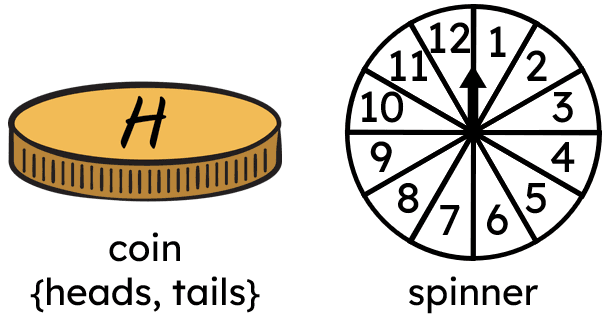
Q2.Trial: Spinner R and spinner T will both be spun once.
The outcomes of this trial are represented on this outcome tree.
In total there will there be branches in layer 2 of the outcome tree.
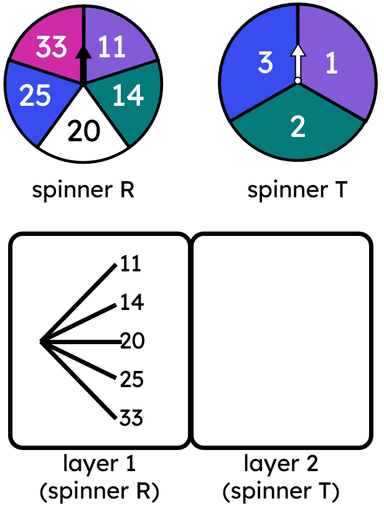
Q3.Trial: flipping the coin and spinning the spinner once each.
Which of these are representations that show the complete sample space of this trial?
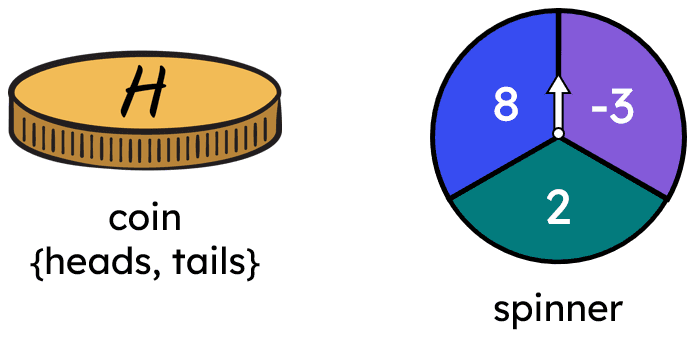
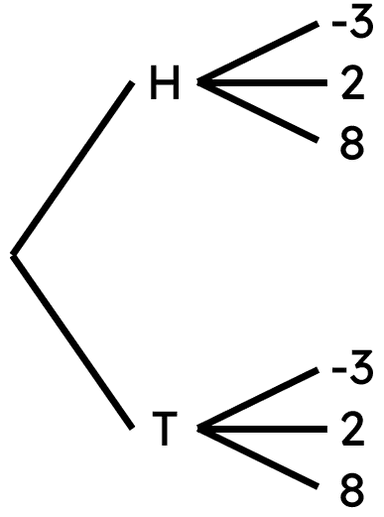
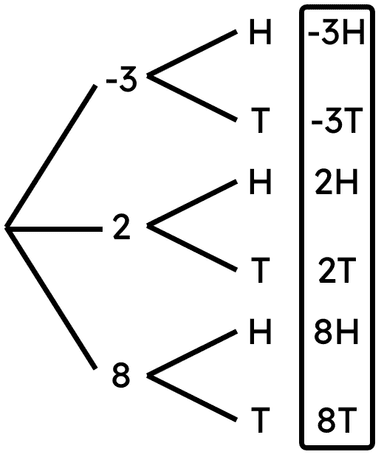
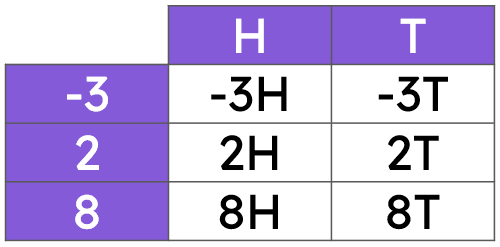
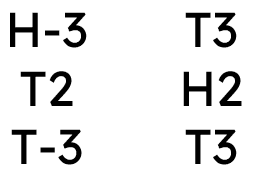
Q4.Trial: spinning this spinner once.
Event: factor of 84. This event and its opposite event are represented on an outcome tree.
The number of outcomes that should be written inside the box is .
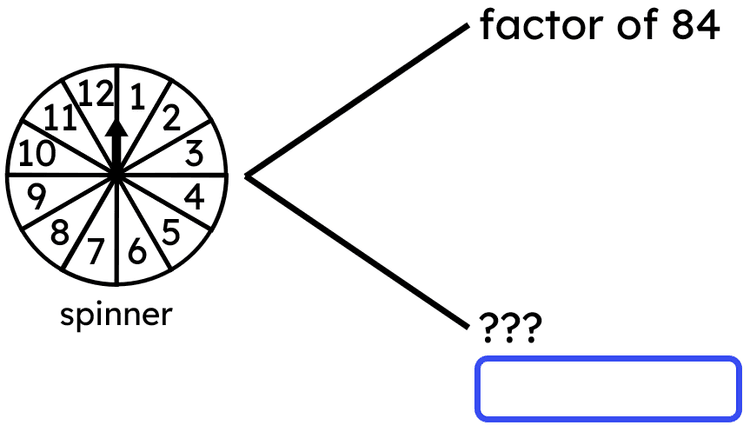
Q5.This incomplete outcome tree represents all outcomes from spinning spinner X twice and multiplying the results of each spin.
Match each letter in the sample space to its value.
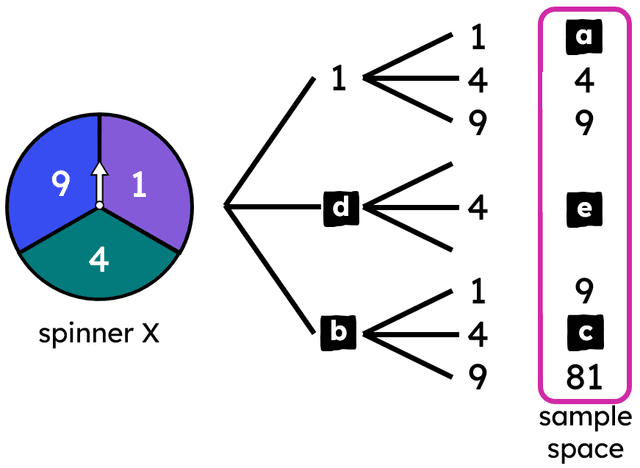
1
9
36
4
16
Q6.Trial: spinning this spinner once.
Event 1: even number.
Event 2: square number.
The outcome that should be written inside the box is .
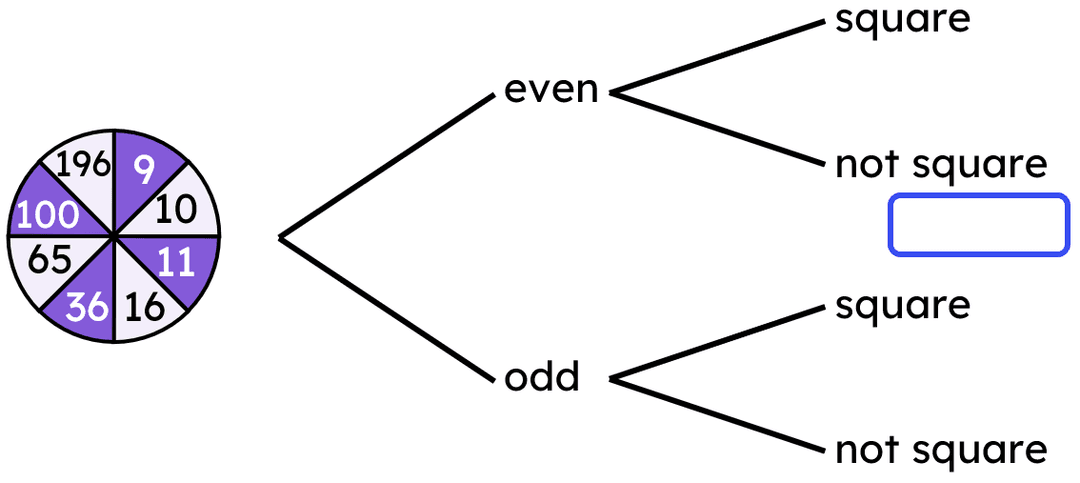
Assessment exit quiz
6 Questions
Q1.Trial: spinning spinner X twice and spinning spinner Y once. The incomplete outcome tree shows this trial. Which outcomes could go in place of the letter a?
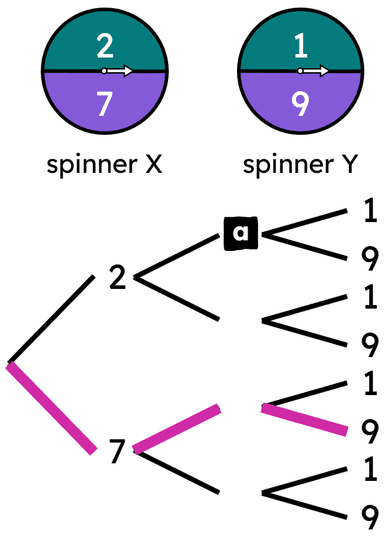
Q2.Trial: spinning spinner X twice and spinning spinner Y once.
Which of these statements could be true for the highlighted set of branches on this incomplete outcome tree?

Q3.Trial: a coin {heads, tails} is flipped three times.
The number of outcomes there are in this trial is . Sketch an outcome tree to help you.
Q4.Trial: Spinner A is spun twice and coin flipped. The outcome of each spin is added together.
This incomplete outcome tree shows all the trial's outcomes.
The value of a in the sample space is .
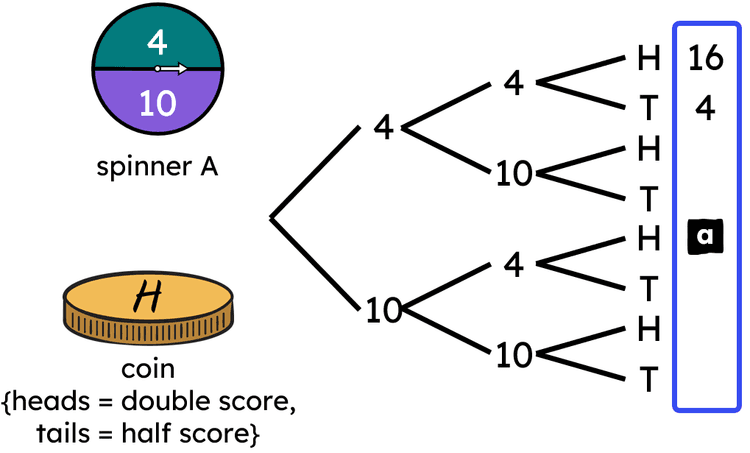
Q5.Trial: spinners 1, 2, and 3 will be spun once each.
This incomplete outcome tree represents all outcomes of this trial.
Match a, b, c, d, and e to the correct outcome of the trial or stage
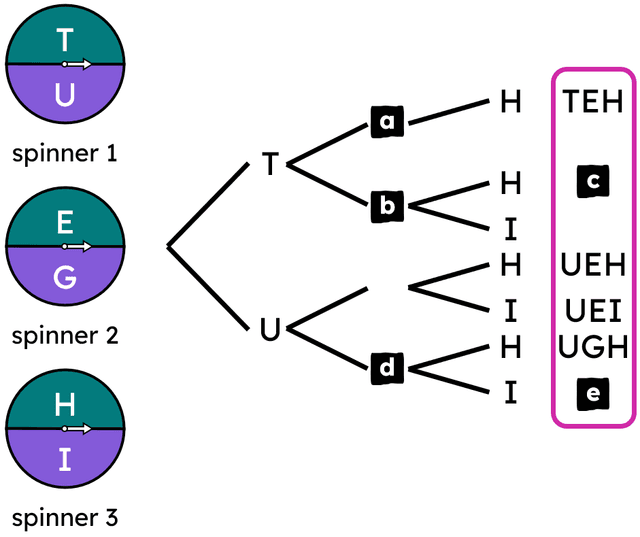
E
G
TGH
G
UGI
Q6.Trial: spinning this spinner once. Event 1: even number. Event 2: square number. Event 3: prime number.
Match each letter to its outcome.
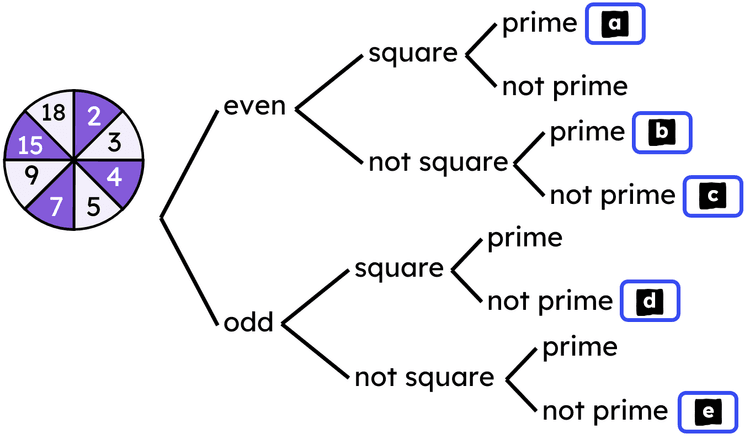
not possible
2
18
9
15


